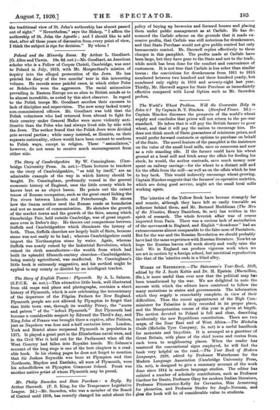The Story of Cambridgeshire By W. Cunningham. (Cam- bridge University
Press. 5s. net.)—These lectures to teachers on the story of Cambridgeshire, "as told by itself," are an admirable example of the way in which history should be taught. Dr. Cunningham, profoundly versed in the general economic history of England, uses the little county which he knows best as an object lesson. He points out the extant traces of Roman occupation, such as the great canal linking the Fen rivers between Lincoln and Peterborough. He shows how the Saxon settlers used the Roman roads as boundaries and not as means of communication. He sketches the growth of the market towns and the growth of the fairs, among which Stourbridge Fair, held outside Cambridge, was of great import- ance even in Defoe's day. He throws out comparisons between Suffolk and Cambridgeshire which illuminate the history of both. Thus, Suffolk churches are largely built of flints, because stone was not easily to be had ; whereas Cambridgeshire could import the Northampton stone by water. Again, whereas Suffolk was nearly ruined by the Industrial Revolution, which ruined its cloth manufacture—the wealth from which had built its splendid fifteenth-century churches—Cambridgeshire, being mainly agricultural, was unaffected. Dr. Cunningham's little book is extremely suggestive, and his method might be applied to any county or district by an intelligent teacher.


































 Previous page
Previous page